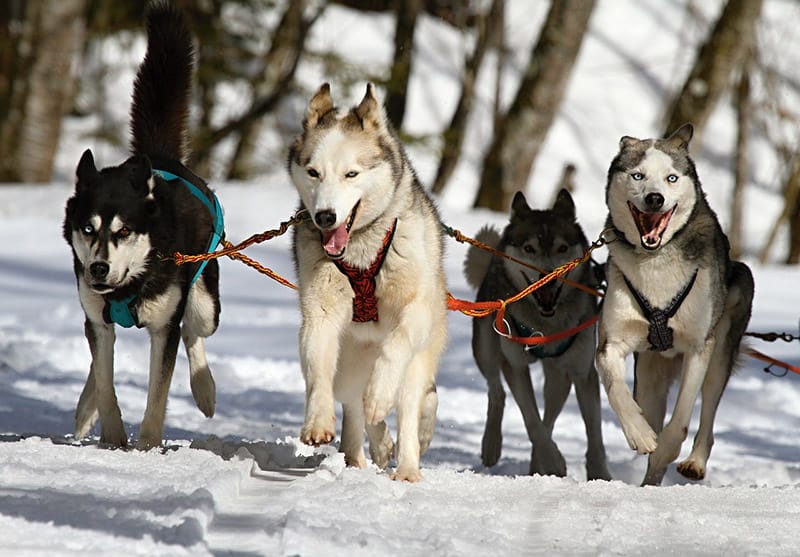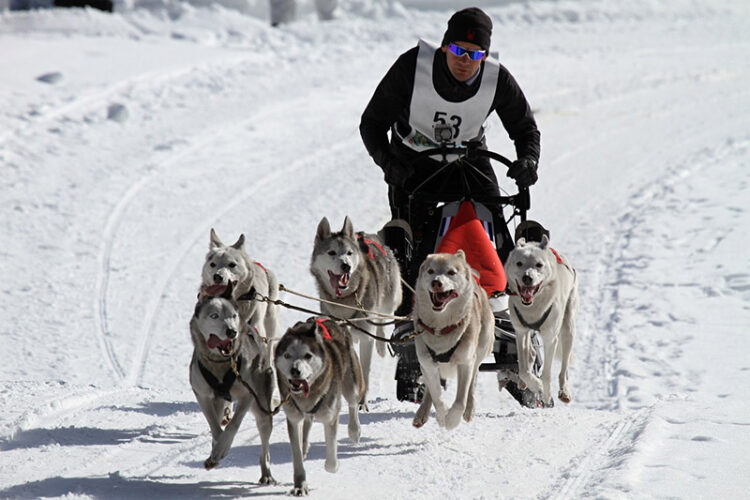Dog sledding has been around for decades, and it was originally intended as a form of transport for indigenous people during winter travels. It has since been used as a form of entertainment and in its modernity, lost its indigenous roots. This has led to cruel practices within the dog sledding community, making dog lovers question whether this controversial sport is ethical or not.
There’s no doubt that dogs love to run and most dogs do enjoy pulling a sled, however, since dog sledding has been a popular way for people to compete for financial gain, there have been many situations where sled dogs were treated poorly.
Before you make a judgment about dog sledding, it is important to be informed about dog sledding itself, and what is making people question whether it is ethical or not. The answer to this question is not straightforward, and it will be dependent on your personal beliefs.
A Brief History Of Dog Sledding
Dog sledding has been around for a while, with archaeological evidence dating back to around 1,000 A.D. It is originally believed to have been used as a way for Inuit and indigenous people to travel in winter and have their supplies pulled by a small sled led by one or two dogs.
Over time, more dogs were used to pull the cargo, as this meant that more supplies could be pulled by the sled dogs making it a more efficient means of travel and supply hauling.
However, European settlers soon started to use dog sleds. Sled dogs were even used during the Seven Year’s War by the French-Canadian Military to pull large loads of supplies in conditions that were too cold for horses. Polar adventurers would later go on to use dog sledding to help them reach the poles. Using dog sledding to carry critical supplies soon became less popular as more efficient means of travel like snowmobiles became the norm.
The most common dog breed that you will find in dog sledding is the Alaskan husky, as they have been bred for endurance, speed, and hardiness to survive in arctic conditions.
It didn’t take long for dog sledding to become a casual sport. After sled dogs were viewed as working dogs by many, these dogs soon became popular in sled racing. This would be for entertainment, and in some cases, prize money. One of the most popular dog sled races is The Iditarod, which is a long-distance race from Anchorage to Nome in Alaska.
The musher (person controlling the sled) should have no less than 12 and no more than 14 dogs pulling a sled, and five dogs still need to be attached to the sled when the race is completed.
So, for some people, dog sledding is seen as a way to use dogs for working purposes while for others, only for racing and entertainment purposes. There is nothing wrong or cruel with having a working dog unless the dog is being mistreated. Sadly, this does often happen in the dog sledding community which is why it has become so controversial and a question of ethics.

Mistreatment and Cruelty Towards Sled Dogs
If dogs were being pulled on a sled for working purposes like when they are used by indigenous people to haul supplies or to travel in freezing conditions, it is important to understand that this is part of a diverse culture that you might not understand. Most of the dogs are treated with respect and are well cared for, and there is no real reason to judge working dogs or working animals in general if they are treated well.
For some, the dog’s whole life purpose is to race, and this can understandably be seen as cruel for people who find that the original intent of dog sledding has been lost and the mistreatment towards sled dogs is unnecessary.
However, not all racing sled dogs are mistreated by their owners, and some of these dogs are treated as part of the family and even enjoy racing. The issue arises when these dogs are mistreated by the owner, seen as disposable dogs whose purpose is for racing, or if the dog is overworked to the point that it spends most of their life suffering when it is not working.
There have been cases where sled dogs were found chained up in the snow or disposed of when the dog is no longer valuable as a sled dog. Many of these dogs are “suffering” behind the scenes of the races, and many huskies are even given up to shelters are racing season.
The Ethics Of Dog Sledding
The question of ethics in dog sled racing happens when these dogs are overworked and subjected to cruel conditions for human entertainment and financial gain. Instead of these sled dogs being used to haul supplies at their own pace and without having to compete in a race, dog sledding has been turned into a sport.
This is where many people raise their concerns over the ethics of dog sledding, especially since there is a noticeable number of dogs who have died or been injured during these races. Dog sledding conditions can be cruel and unpleasant, with some dogs collapsing or dying due to overexertion, exertional myopathy, pneumonia, or even injuries along the race.
For some people, it can be seen as unnecessary to race dogs who have been known to get injured or overworked during the race only for entertainment purposes, and people feel as if these dogs are being used. While others see it as no problem if the dog enjoys pulling the sled and they are treated well by the owner.

Conclusion
There are both negative and positive sides to dog sledding, but if the dog is mistreated, neglected, and suffering as a sled dog, then it is considered cruel. However, not all sled dogs are mistreated, and it is important to understand that the care the dog receives depends on the owner and companies that host these dog sledding races.
When it comes to using sled dogs for working purposes, it becomes a necessity for some people, but it can be considered cruel if the dog is being neglected. Although this generally isn’t the case.
Featured Image Credit: Pixabay














